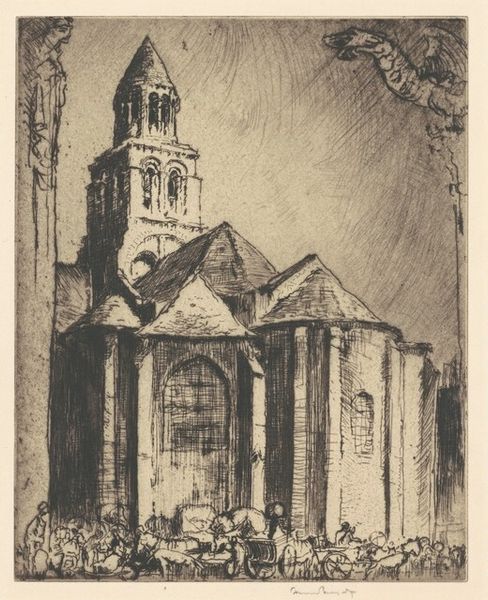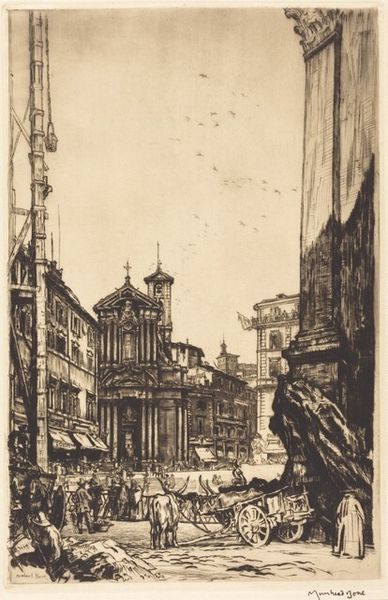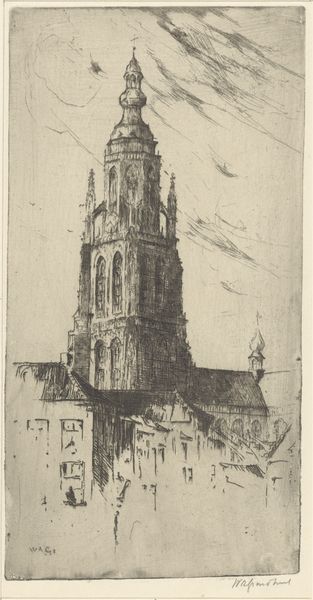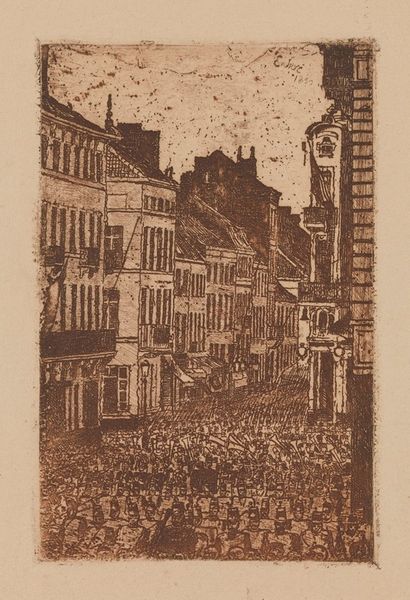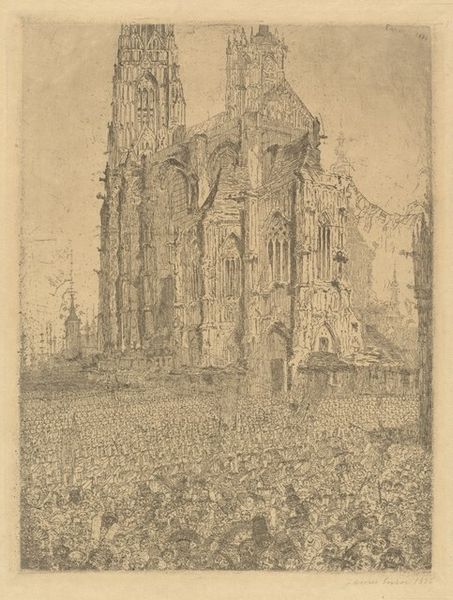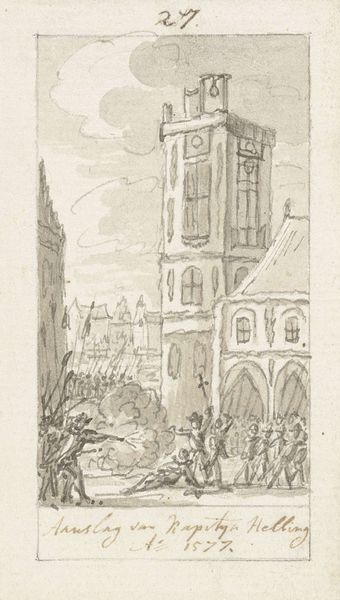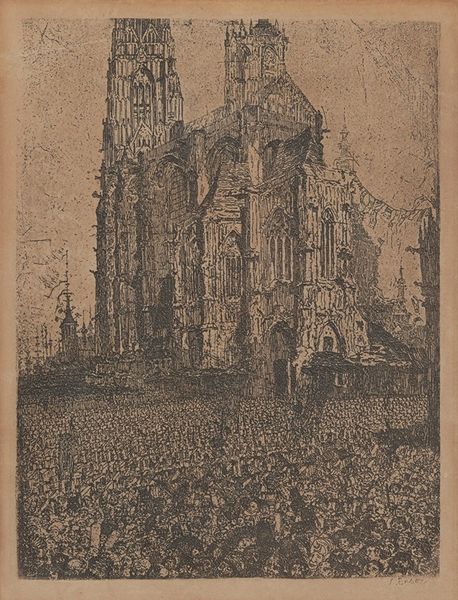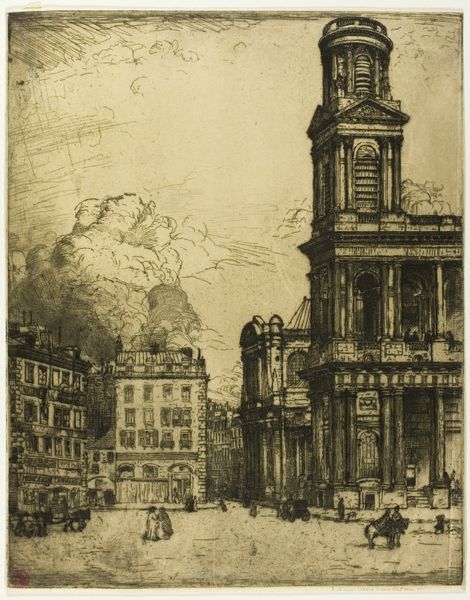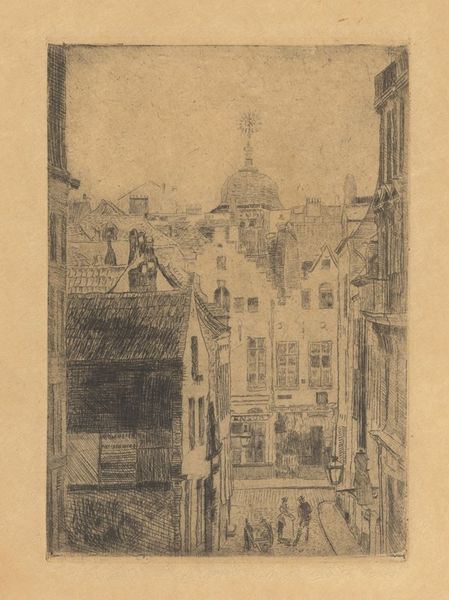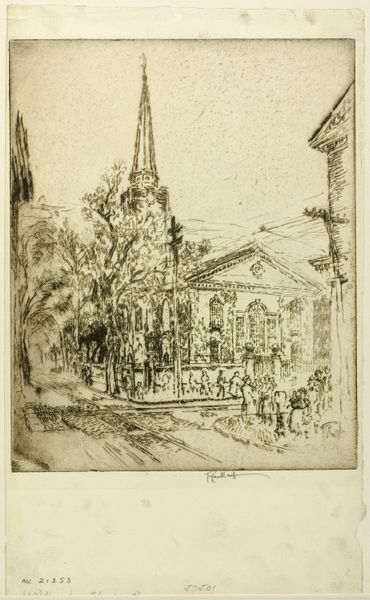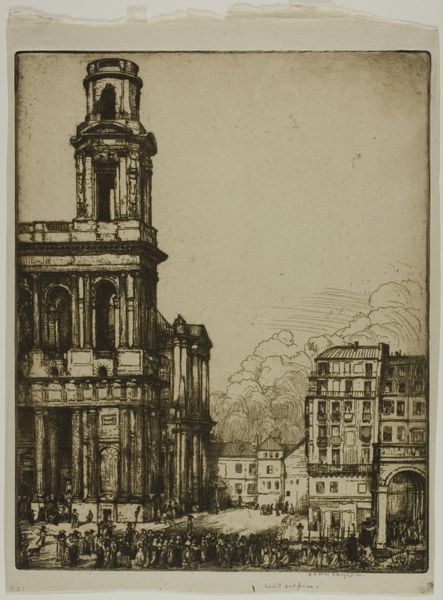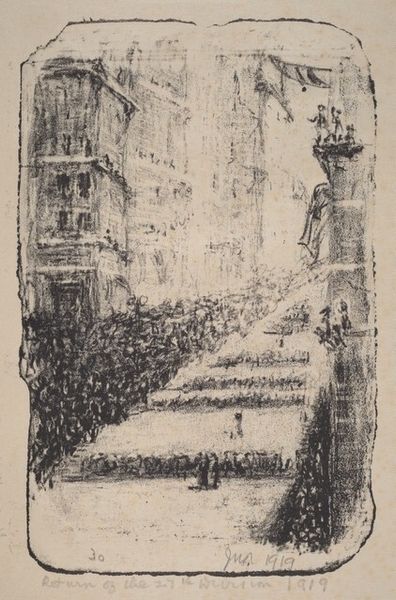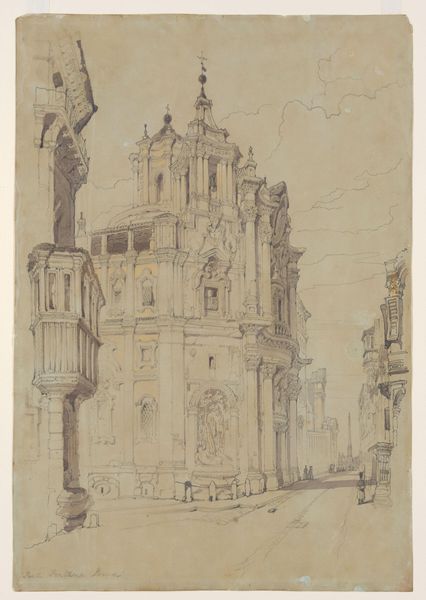
Dimensions: plate: 32.5 x 27.3 cm (12 13/16 x 10 3/4 in.) sheet: 40.2 x 35.1 cm (15 13/16 x 13 13/16 in.)
Copyright: National Gallery of Art: CC0 1.0
Curator: Here we have John Marin’s 1908 etching, "Saint-Sulpice, Paris". It’s a striking example of his early work in Europe. Editor: Oh, I love the trembling, chaotic energy of it! It's as though the church itself is alive, vibrating with the pulse of the city. The sheer volume of swirling lines. Curator: It's fascinating, isn't it? Marin’s technique almost seems to dismantle the architectural grandeur of Saint-Sulpice, presenting it through an impressionistic lens of dynamism and chaos. It challenges the monumentality of the Church. Editor: Exactly! Instead of portraying it as some monolithic symbol, Marin gives us a lived experience of Saint-Sulpice—it's entangled in the bustling street life, shrouded by the trees, as integral as the church is to daily routines of people passing through. Curator: Marin, even early on, seemed less interested in traditional artistic values or a flawless composition. Editor: Right, there’s a beautiful disregard for what society might consider perfection. More interesting to focus on impressions and sensations in all of their imperfection, no? Did he include these everyday scenes with an intention? Curator: He may have been trying to find that modern artistic spirit that the flâneur embodies. He often focuses on these buildings to display and explore American’s engagement and identity with this new kind of urban space. Editor: Interesting... Looking at it that way, you know, it gives the work a playful quality. As though the scene itself is mocking these historical edifices—by showing an environment of everyday urban rituals that are a complete clash in genre! Curator: The etching also exemplifies the influence of Whistler on Marin's early work. Whistler similarly focused on cityscapes and emphasizing atmosphere. Editor: Well, whatever it is, this Saint-Sulpice feels far more honest than many stately architectural portraits. Marin manages to capture a feeling more than just an image. Curator: Precisely. And in that honesty, we find a different kind of monumentality, the monumentality of lived experience. Editor: Agreed! It leaves me thinking about how art can question even our most rigid perceptions of reality and remind me of what buildings can really be, living structures that change by use.
Comments
No comments
Be the first to comment and join the conversation on the ultimate creative platform.
